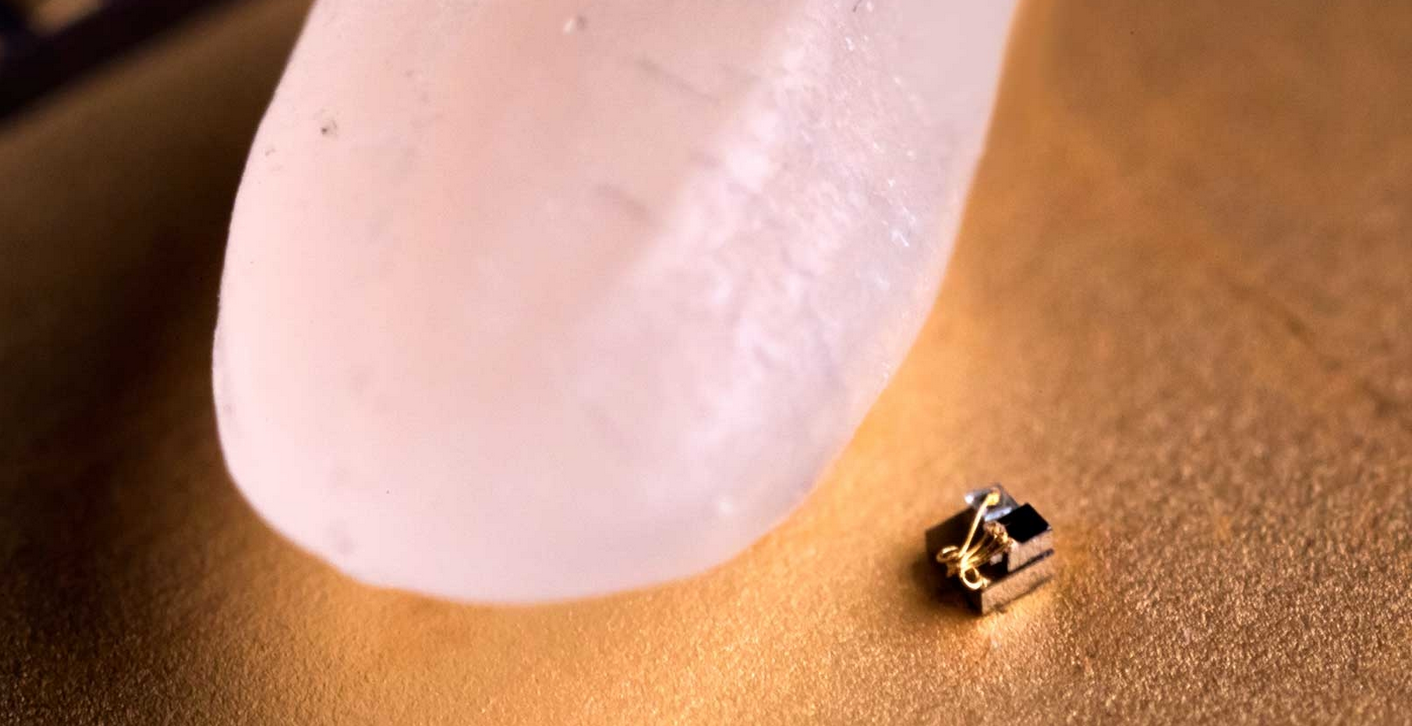The Tiniest Computer in the World Makes a Grain of Rice Look Massive

The scientists at the IBM have made the “world’s smallest computer,” but the University of Michigan wanted to challenge them, and they created a 0.04 cubic millimeters computer that can sense temperature. It’s ten times smaller than the IBM’s device which set the record for the smallest computer in the world.
Looking at the photograph of the tiny device, a grain of rice seems to be a giant. The leader of development, David Blaauw is a professor of electrical and computer engineering, working together with Dennis Sylvester, also a professor of ECE, and Jamie Phillips, an Arthur F. Thurnau Professor and professor of ECE.
“We are not sure if they should be called computers or not. It’s more of a matter of opinion whether they have the minimum functionality required,” said Blaauw.
The small device made scientists find a way to reduce the effect of light. They had to ditch diodes and use switched capacitors, also fighting the relative increase in electrical noise coming from the little power that the device uses:
“We basically had to invent new ways of approaching circuit design that would be equally low power but could also tolerate light,” explained Blaauw.
Detecting Temperature Variations Inside the Body
Finally, the minuscule device turned out to be a sensor that can measure changes in very small regions, like in groups of cells inside the body. Scientists have long thought that cancer tumors are a little hotter than the healthy tissue, but until now it has been difficult to verify this theory. With this device, they could see that slight temperature difference, said Gary Luker, a professor of radiology and biomedical engineering at the University of Michigan:
“Since the temperature sensor is small and biocompatible, we can implant it into a mouse and cancer cells grow around it. We are using this temperature sensor to investigate variations in temperature within a tumor versus normal tissue and if we can use changes in temperature to determine success or failure of therapy.”
If the device can successfully detect the variation of the temperature inside the body, it will help with cancer treatment, and it can also be used in diagnosing glaucoma from inside the eye or monitor other biochemical processes.
As for why some people might not see the device as a computer, it’s because it loses all data when it has no power. However, the tiny sensor has a processor based on an ARM Cortex-M0+ design.
0 comments